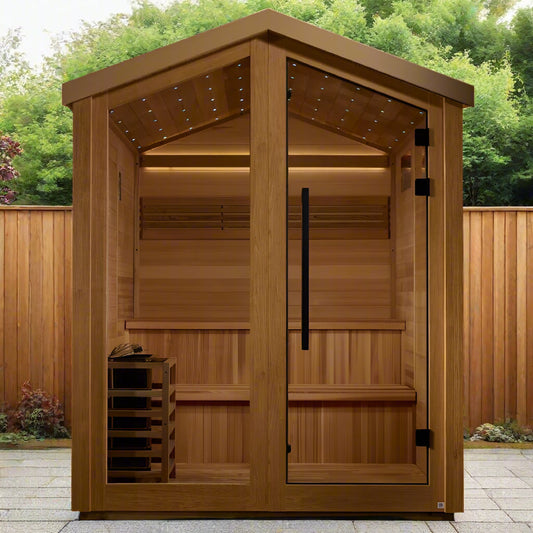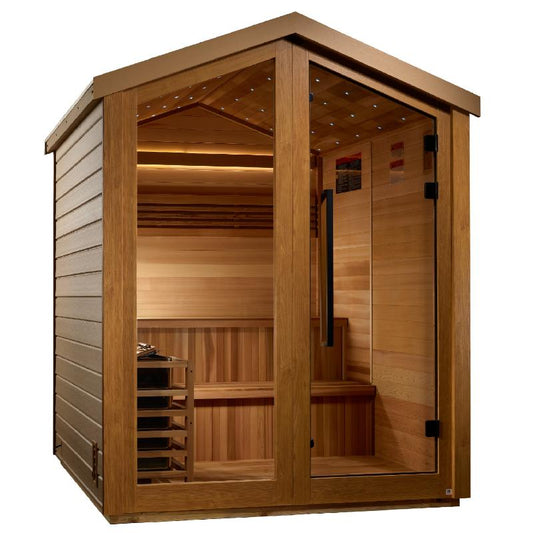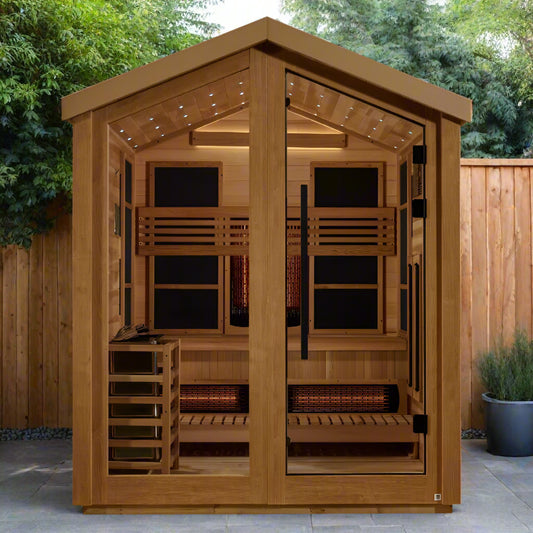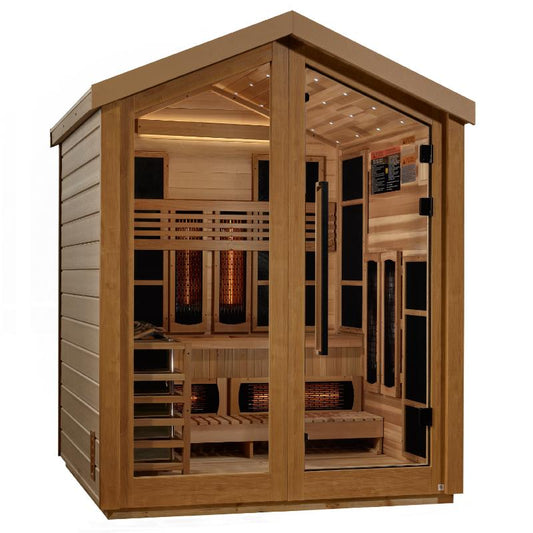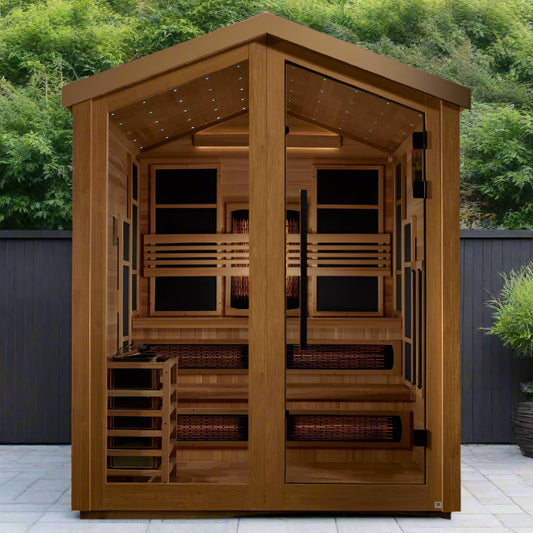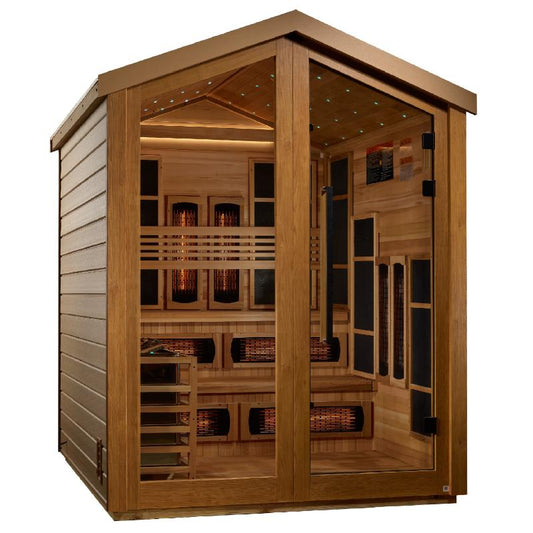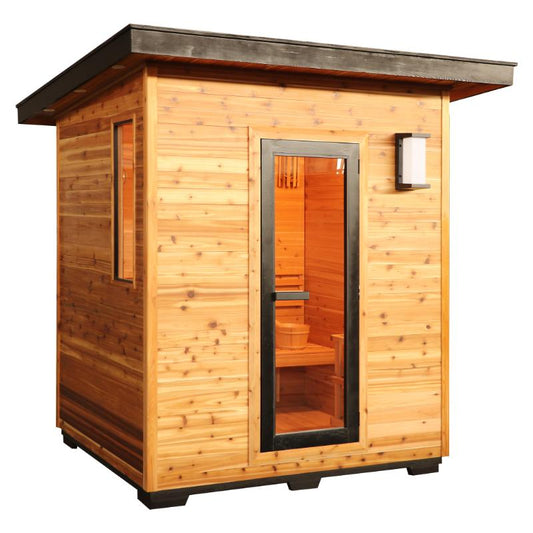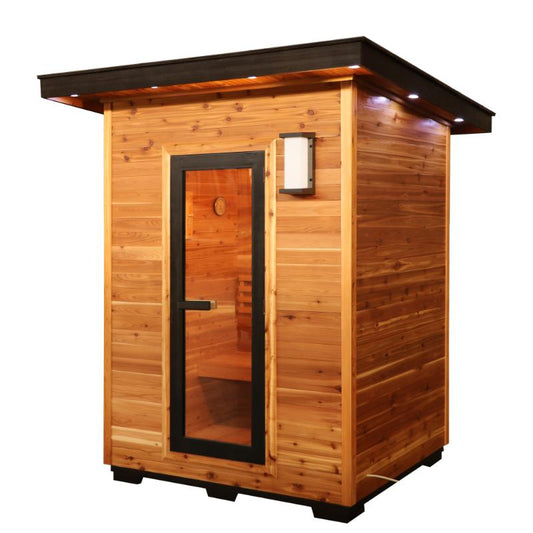Outdoor steam saunas combine the deep, purifying heat of a traditional sauna with the fresh air and beauty of the outdoors. Whether set beside your garden, built onto a deck, or overlooking a snowy yard, an outdoor sauna turns your space into a personal retreat. The heat works deeply to relax muscles and clear your system, while stepping outside after a session offers the invigorating contrast that makes the ritual unforgettable.
Why Choose an Outdoor Steam Sauna?
-
Authentic steam experience – Pour water over the heated rocks to raise both temperature and humidity.
-
Nature connection – The transition from high heat to fresh air is grounding and revitalizing.
-
Multiple heater options – Choose electric for easy control or a wood-burning stove for the most traditional sauna experience.
-
Custom fit – Available in sizes from cozy solo retreats to spacious 8-person cabins.
What You’ll Find in This Collection
Our outdoor steam saunas are built specifically for year-round outdoor use, no conversions, no compromises:
-
Electric heaters for dry heat with optional steam
-
Wood-burning stove models for off-grid or traditional setups
-
Design choices: barrel, cube, cabin, and rounded roof styles
-
Durable materials: Western red cedar, Nordic spruce, and thermowood options
Built for the Elements
Every model in this collection is designed to withstand the weather while delivering consistent performance year after year. Many arrive preassembled or as straightforward kits you can set up in a day. Brands include Dundalk LeisureCraft, Golden Designs, SaunaLife, and SunRay Saunas, all trusted names in sauna craftsmanship.
Good to Know Before You Buy
-
Electrical requirements vary by model. Check our Sauna Electrical Requirements Guide before ordering.
-
Wood choices and insulation levels differ by brand and design.
-
Barrel saunas heat quickly; cabin saunas offer more space and headroom.
-
Wood-burning stoves require proper clearances and chimney installation.
If you’re ready to combine the timeless ritual of steam with the beauty of the outdoors, explore our outdoor steam sauna collection and find the one that matches your space, your lifestyle, and your sense of home.
Check out the Sauna Heater Size Selector Guide to find the right size heater for your traditional steam sauna.

